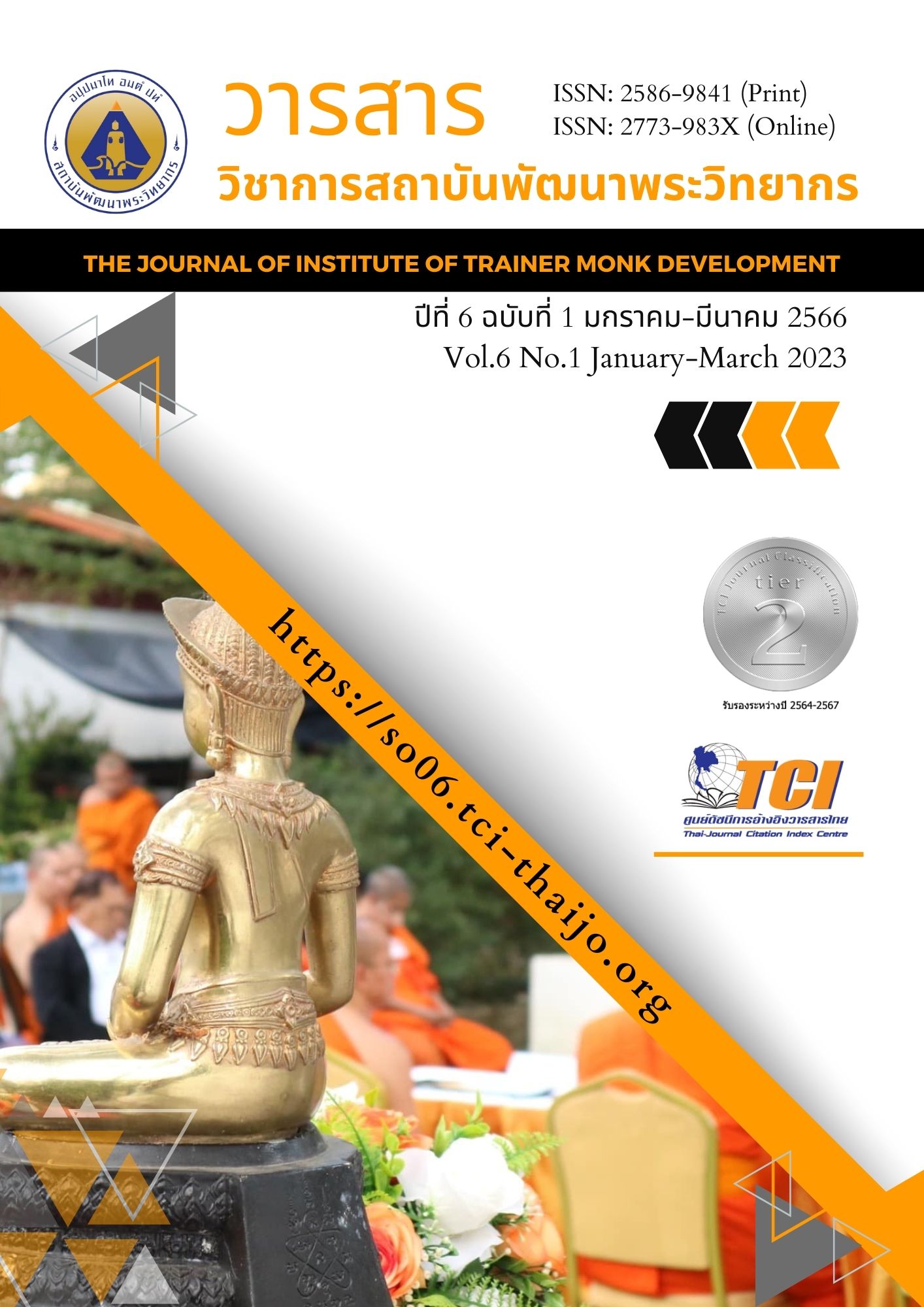Buddhist Ethics on Killing with the case of death penalty
Main Article Content
Abstract
This article presents the concept of Buddhist ethics in the case of the death penalty. The objective is to study the concept and analysis of panatibat in Buddhist ethics versus the concept of international theory base on the death penalty. The results of the study showed that Buddhist ethics aims to use non oppression as a guarantee of social peace. The death penalty is the highest penalty level to punish on prisoners live. It is a legal process in which the state punishes a person who commits a crime by means of various method to destroy life or to kill, on the purpose of eliminate the perpetrator from society completely. Whether or not the execution was a panatipat. There is a diagnostic criterion regarding the killing of animals according to Buddhist principles that having the intent to kill is a panatibat, on the contrary, there is no intent to kill, not counting as a panatibat.
Article Details

This work is licensed under a Creative Commons Attribution-NonCommercial-NoDerivatives 4.0 International License.
บทความที่ได้รับการตีพิมพ์เป็นลิขสิทธิ์ของวารสารวิชาการสถาบันพัฒนาพระวิทยากร
ข้อความที่ปรากฎอยู่ในบทความที่ได้รับการตีพิมพ์ในวารสาร ถือเป็นความรับผิดชอบของผู้เขียนบทความ และข้อคิดเห็นนั้นไม่ถือว่าเป็นทัศนะและความรับผิดชอบของกองบรรณาธิการวารสารวิชาการสถาบันพัฒนาพระวิทยากร
References
สำนักข่าวไทย. (2565). สถิตินักโทษประหาร. สืบค้นข้อมูลเมื่อวันที่ 1 พฤศจิกายน 2565 จาก https://tna.mcot.net/tna-477838.
คณะกรรมการสิทธิมนุษยชนแห่งชาติ. (2557). โทษประหารชีวิตในประเทศไทย คณะกรรมการสิทธิมนุษยชนแห่งชาติ. กรุงเทพมหานคร: สำนักงานคณะกรรมการสิทธิมนุษยชนแห่งชาติ.
พระวิสิทธิ์ ฐิตวิสิทฺโธ (วงค์ใส). (2564). โทษประหารชีวิต: ใครมีสิทธิ์ ชีวิตเป็นของใคร. วารสารบัณฑิตแสงโคมคำ วิทยาเขตเชียงใหม่, 6(1): 109.
มหาจุฬาลงกรณราชวิทยาลัย. (2539). พระไตรปิฎกภาษาไทย ฉบับมหาจุฬาลงกรณราชวิทยาลัย. กรุงเทพมหานคร: โรงพิมพ์มหาจุฬาลงกรณราชวิทยาลัย.
วิศิน อินทสระ. (2527). หลักคำสอนสำคัญในพระพุทธศาสนา. กรุงเทพมหานคร: โรงพิมพ์มหามกุฎราชวิทยาลัย.
วันชัย ศรีนวลนัด. (2557). “โทษประหารชีวิต หลักคิดด้านสิทธิมนุษยชน”. เอกสารวิชาการส่วนบุคคล. หลักสูตรหลักนิติธรรมเพื่อประชาธิปไตย. กรุงเทพมหานคร: สำนักงานศาลรัฐธรรมนูญ.
สมเด็จพระมหาสมณเจ้ากรมพระยาวชิรญาณวโรรส. (2538). เบญจศีลและเบญจธรรม. พิมพ์ครั้งที่ 15. นครปฐม: โรงพิมพ์มหามกุฎราชวิทยาลัย.
สมาคมสิทธิเสรีภาพของประชาชน. (2548). โทษประหารชีวิตในประเทศไทย. กรุงเทพฯ: มาสเตอร์เพรส.
สุพจน์ สุโรจน์. (2550). ทฤษฎีการลงโทษและแบบการลงโทษ. เอกสารการสอน ชุดวิชาอาชญาวิทยาและทัณฑวิทยา. นนทบุรี: มหาวิทยาลัยสุโขทัยธรรมาธิราช.
แสง จันทร์งาม. (2521). พุทธศาสนวิทยา. กรุงเทพมหานคร: สำนักพิมพ์บรรณาคาร.
อุทัย กมลศิลป์. (2561). “การศึกษาวิเคราะห์แนวคิดพุทธจริยศาสตร์กับการลงโทษประหารชีวิต”. ดุษฎีนิพนธ์พุทธศาสตรดุษฎีบัณฑิต สาขาวิชาปรัชญา. บัณฑิตวิทยาลัย มหาจุฬาลงกรณราชวิทยาลัย.


